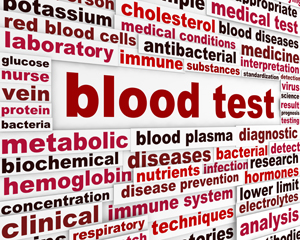Test Talk: Folate
Collection requirements and diagnostic value
by Dennis Ernst • April 02, 2019

Folate is a vitamin the body cannot produce. The term is often used interchangeably with folic acid, but there's a subtle difference. Folate is naturally occurring in foods; folic acid is the synthetic form of vitamin B9 found in supplements and fortified foods. Regardless, neither is produced in the body and dependent on dietary intake to perform its function.
Folate serves many purposes. It's essential for proper brain function, impacting one's mental and emotional health. It aids in developing the body's genetic material. Folate works closely with vitamin B12 to help make red blood cells and help iron work properly in the body. Therefore, folate deficiency is often suspected when patients experience cognitive changes, mental abnormalities, and other related neuropathies. Conditions that cause folate deficiencies include malnutrition, alcoholism, inflammatory bowel disease (IBD), and celiac disease. It is also suspected when a CBC reveals a low red blood cell (RBC) count and a high MCV (mean corpuscular volume), suggesting anemia with large red blood cells.
Because red blood cells store 95% of circulating folate, a RBC folate test may be ordered instead of a folate test to measure the folate level within RBCs instead of that within serum. Vitamin B12 is often ordered simultaneously with folate since their deficiencies produce similar symptoms, and the two vitamins work in concert, orchestrating some of the same functions. Because red blood cells store 95% of circulating folate, a test to measure the folate level within RBCs may be used in addition to or instead of the serum test.
Samples for folate and Vitamin B12 are typically serum samples, although RBC folates require an EDTA-preserved sample. Overnight fasting is recommended. Hemolyzed samples should not be tested. If testing will be delayed beyond 8 hours, the sample should be protected from light.
After centrifugation, the serum or plasma should be frozen. Some references suggest freezing is required when testing will not be performed within 30 minutes (WHO). Preanalytical decreases have been noted when serum was subjected to contact with cells for 72 hours. Follow your facility's policy.
Bibliography
- LabTestsOnline. American Association for Clinical Chemistry. AACC. https://labtestsonline.org/understanding/analytes/vitamin-b12/tab/sample.
- CLSI. Procedures for the Handling and Processing of Blood Specimens for Common Laboratory Tests; Approved Guideline—Fourth Edition. H18-A4. Clinical and Laboratory Standards Institute. Document H18-A4 Wayne, Pennsylvania 2010.
- Wu A. Tietz Clinical Guide to Laboratory Tests---Fourth Edition. Elsevier. St. Louis, Missouri. 2006.
- World Health Organization. Use of Anticoagulants in Diagnostic Laboratory Investigations. WHO. Geneva, Switzerland. 2002.
- CDC. Laboratory Procedure Manual, Folate/Vitamin B12,, Serum and Whole Blood, Method: Bio-Rad Laboratories' "Quantaphase II Folate/Vitamin B12" Radioassay Kit. https://www.cdc.gov/nchs/data/nhanes/nhanes_03_04/l06_c_met_folates-b12.pdf. Accessed 4/1/2019.
Related Posts and Information
overall rating: my rating: log in to rate
folate YouTube requirements test
